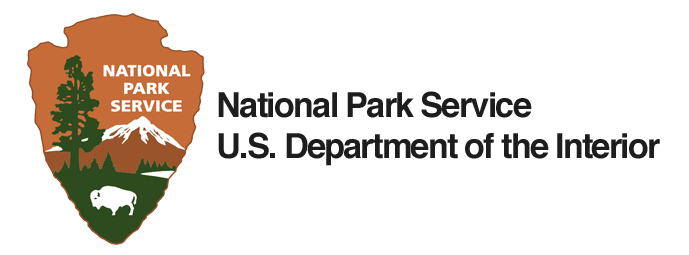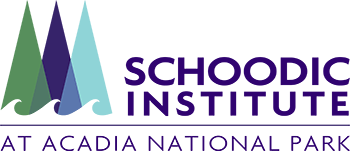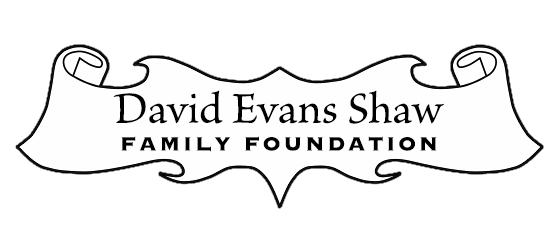by Catherine Schmitt, Science Communication Specialist with Schoodic Institute at Acadia National Park
Scientists often express frustration over their attempts to communicate with public audiences. Through our workshops and presentations, I’ve come to believe that one root of this frustration is the difference in nature-related knowledge and experiences between scientists and their audiences. Unaware of this difference, scientists present their work or share their story using scientific language, concepts, and perspective, without realizing that the audience has no idea what they are talking about. In a way, their knowledge becomes a “curse” that prevents effective communication.
The curse of knowledge: When you know something very well it becomes hard to remember what it was like not to know it. Conservation scientists spend their days surrounded by nature and other scientists. They tend to forget that most people live in a very different world.
Take formal education, for example:
- 66 % of high school graduates go on to college, and less than 10 % major in biology or ecology.
- 13 % of U.S. adults have a master’s degree; only 17 % are in a STEM field (most are in business).
- 2 % of U.S. adults have a PhD; only 4 % of PhDs are in biology (most are in medicine or law).[1]
Combined with years or decades of experience, this education and training adds up to a lot of knowledge.
Meanwhile, the majority of American adults have no idea what scientists do, how they do it, or, most importantly, why.
Some information about what they know comes from the National Science Foundation’s Science & Engineering Indicators:
- 77 % of American adults don’t understand the meaning of a “scientific study.”
- A majority of Americans think scientists are “odd and peculiar.”
- The average number of correct answers to a series of true-false questions about science topics hasn’t changed. Half of Americans don’t know that electrons are smaller than atoms. One-quarter of Americans don’t know that the Earth revolves around the sun.[2]
Ask a question about some aspect of conservation science and the result would likely be similar. The public’s knowledge of animals is limited mostly to mammals and birds, and wildlife they can see. Science, investment, public outreach, and media are biased toward mammals, birds, and endangered species, and these trends reinforce each other.[3] The lack of nature knowledge among youth is well established.[4] In a recent study of North Carolina youth, most were more familiar with exotic or domestic animals than local wildlife, regardless of whether they lived in urban, suburban, or rural areas. Only experience with hunting appeared to influence familiarity with local wildlife.[5] Even rural children spend most of their time indoors.[6] In another study, hikers were asked about amphibians. About half said they liked amphibians. But 40 % said they did not know.[7] This means a good portion of a recreational audience, with some connection to the outdoors, does not even have an opinion about amphibians!? In the case of endangered Atlantic salmon in Maine, decreased populations led to decreased prominence in people’s lives and increased psychological distance. Salmon and fish in general were not relevant or motivating to the average resident, a finding both surprising and disappointing to salmon advocates.[8]
This difference in knowledge is just that—difference—and doesn’t mean that scientists are smarter or better. It does mean that scientists should be aware of how their knowledge and particular lived experience might be unfamiliar to their audience, and how it can prevent shared understanding or information exchange.
Most people are psychologically distant from nature. When nature is far away and unfamiliar, it is difficult to relate to scientists and what they are trying to communicate. This is why it is so important to reduce jargon and use simple language.
Scientists love to talk about “biodiversity” and “ecosystems,” and consider them more important than individual animals or plants. But non-scientists associate “nature” with individual animals, plants, trees and forests, the color green, water, and beauty.[9] In Maine, people relate to towns and specific bodies of water, not “watersheds.”[10]
Public knowledge is partly the result of changes in nature, and ways of experiencing nature. People who don’t spend their lives working in nature (and who are not part of Indigenous cultures) have a different relationship with their surroundings. For the majority of Americans, “functional attachment” and active engagement with nature, such as through fishing, hunting, and gathering, have shifted to more “aesthetic attachment” and passive experiences, such as enjoying natural scenery.[11]
But this doesn’t mean that people don’t care. Multiple polls and surveys show that:[12]
- People care about the Earth.
- People want communication about science.
- People want the media to cover more science stories.
Scientists and science communicators should be encouraged by research that shows information makes a difference. As climate scientist Katharine Hayoe says, “the most important thing we can do about climate change is talk about it.” There does seem to be a “tipping point” when enough facts and broader public sentiment can lead people to change their minds.[13]
For example, a majority of Americans are “worried” about global warming,[14] and the latest Six Americas survey (November 2019) found that more people than ever are “Alarmed” by climate change.[15] When asked why they became more concerned, people said they had either experienced the impacts of climate change (reduced psychological distance) or learned more about it (increased information).[16] Similarly, the Maine Climate Table found that people who moved to become more in favor of taking action on climate change said they learned about how climate change is impacting (or could impact) Maine, and about specific ideas for how to take action.
These trends should be encouraging and motivating to scientists. So, in addition to awareness of the curse of knowledge, what are some ways to overcome it when communicating about science?
- Make it local. Overcome the distance barrier by talking about the here and now. Everyone filters information through their own life, favoring the self over statistics. Depending on the audience, this might require thinking beyond single parks or preserves and connecting to the nature and related issues and events they might be experiencing at home. For example, Second Century Stewardship Fellow Allison Gardiner relates her research on ticks in Acadia to the backyards of anyone living in the Northeast.
- Show don’t tell. The human brain privileges experience over analysis and data. By engaging people in science, through field trips and citizen science, scientists can show what they know, and how they know it. Even more importantly, scientists tend to be incredibly enthusiastic in the field or lab—that enthusiasm is infectious and helps people connect, even if they don’t fully understand the science. By exchanging information about nature while showing how science works, scientists can learn more about their audiences while dispelling stereotypes and inspiring others, which is what Allyson Jackson did when she worked with dozens of volunteers with the Dragonfly Mercury Project to collect insects for her research. National parks and other protected areas are where most people are encountering science—but that means that people who don’t visit a national park don’t have these opportunities.[17] Scientists should support efforts to increase and ensure equitable access to nature, so that others can share the joy and inspiration gained from time spent outside.
- Consider sharing a personal story. Remember people don’t know who scientists are, what they do, how, or why, but they are interested. Scientists are so interesting! Helping people connect emotionally can shape public sentiment around important science issues.[18] National Park Service Interpreters and Educators strive to help visitors make emotional connections with parks. There are many training programs and initiatives to understand and practice “storytelling,” including Story Collider, Story Circles, and “Science Cafes”. Scientists can also create more story opportunities and spaces, which are much needed: for example, Caitlin McDonough MacKenzie helped create Plant Love Stories, and Stephanie Spera appeals to personal vacation memories in her request for old photographs of Acadia foliage.
Knowledge can be a curse, but it is also a blessing. Those among us who get to work in nature, with nature, and for nature are very, very, very lucky. Sharing stories, and just a little bit of knowledge, about the wonder, beauty, and mystery of life on Earth can be powerful enough to lift even the most stubborn curse.
References
[1] National Center for Education Statistics. 2020. Immediate College Enrollment Rate; Graduate Degree Fields; Most Popular Majors. US Department of Education.
[2] National Science Board. 2018. Public knowledge about S & T. Science and Engineering Indicators, Chapter 7, Science and Technology Public Attitudes and Understanding; see also Pew Research Center. 2019. What Americans Know About Science.
[3] Martin-Lopez et al. 2009. What drives policy decision-making related to species conservation? Biological Conservation 142:1370-1380; Albert et al. 2018. The twenty most charismatic species. PLoS ONE 13(7):e0199149; Jaric et al. 2018. On the overlap between scientific and societal taxonomic attention – insights for conservation. Science of the Total Environment 648:772-778; Kidd et al. 2018. Tweeting for their lives: Visibility of threatened species on Twitter. Journal for Nature Conservation 46:106-109; Fernandez-Bellon and Kane. 2019. Natural history films raise species awareness—A big data approach. Conservation Letters 13:e12678.
[4] https://www.childrenandnature.org/
[5] Schuttler et al. 2019. Children’s attitudes towards animals are similar across suburban, exurban, and rural areas. PeerJ 7:e7328.
[6] Larson et al. 2018. Outdoor time, screen time, and connection to nature: Troubling trends among rural youth? Environment and Behavior 51:1-26.
[7] Loyau and Schmeller. 2016. Positive sentiment and knowledge increase tolerance towards conservation actions. Biodiversity and Conservation 26:461-478.
[8] Leibich et al. 2018. Reclaiming a space for diadromous fish in the public psyche and sense of place. Fisheries 43:231-240.
[9] Buijs and Elands. 2013. Does expertise matter? An in-depth understanding of people’s structure of thoughts on nature and its management implications. Biological Conservation 168:184-191.
[10] Leibich et al. 2018. Reclaiming a space for diadromous fish in the public psyche and sense of place. Fisheries 43:231-240.
[11] Gurney et al. 2017. Redefining community based on place attachment in a connected world. Proceedings of the National Academy of Sciences 114:10077-10082.
[12] https://news.gallup.com/poll/207536/water-pollution-worries-highest-2001.aspx; https://www.pewresearch.org/fact-tank/2019/02/07/more-republicans-say-stricter-environmental-regulations-are-worth-the-cost/; https://www.nsf.gov/statistics/2018/nsb20181/report/sections/science-and-technology-public-attitudes-and-understanding/public-attitudes-about-s-t-in-general; Weigel and Metz. 2018. The Language of Conservation: Updated Recommendations on How to Communicate Effectively to Build Support for Conservation. Public Opinion Strategies and Fairbank, Maslin, Maullin, Metz & Associates for The Nature Conservancy. https://www.axios.com/news-consumption-read-topics-56467fe6-81bd-4ae5-9173-cdff9865deda.html; https://www.pewinternet.org/2010/03/01/part-1-the-news-environment-in-america/; https://www.pewresearch.org/science/2015/12/11/public-interest-in-science-health-and-other-topics/; https://www.journalism.org/2017/09/20/science-news-and-information-today/
[13] Redlawsk et al. 2010. The affective tipping point: Do motivated reasoners ever “get it”? Political Psychology 31:563-593.
[14] https://climatecommunication.yale.edu/visualizations-data/ycom-us/
[15] https://climatecommunication.yale.edu/about/projects/global-warmings-six-americas/
[16] Deeg et al. 2019. Who is changing their mind about global warming and why? Yale University and George Mason University. New Haven, CT: Yale Program on Climate Change Communication.
[17] Funk et al. 2017. Science News and Information Today. Pew Research Center.
[18] e.g., Bickford et al. 2012. Science communication for biodiversity conservation. Biological Conservation 151:74-76; https://www.npr.org/2020/01/13/795977814/your-brain-on-storytelling



